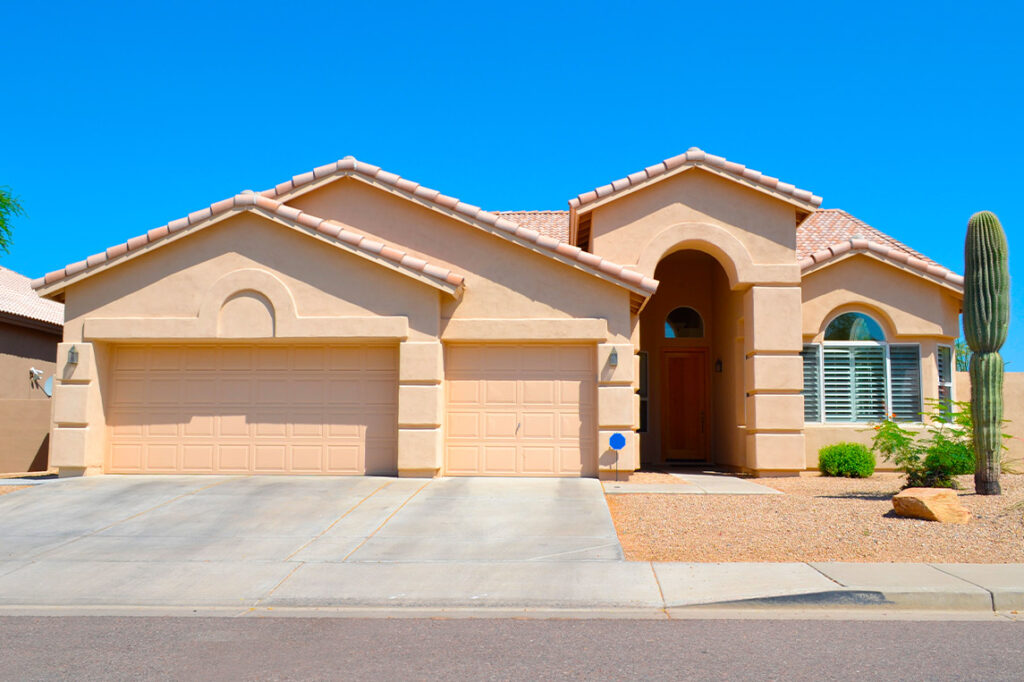McAllen’s monsoon season brings welcome rainfall but also high humidity, trapped moisture, and the perfect storm for mold to thrive on rooftops. Mold isn’t just an eyesore; it can damage your roofing structure and negatively impact your home’s air quality and your family’s health.
This guide walks you through five practical steps to protect your McAllen roof from mold growth during monsoon season.
Step 1: Understand the McAllen Monsoon and Why Mold Is a Major Roof Threat
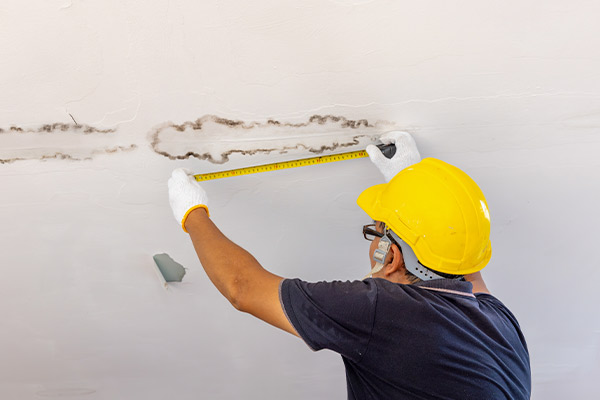
Understanding McAllen’s unique climate is key to recognizing why mold growth is such a serious risk. McAllen’s temperatures often range from 68°F to 95°F with average humidity levels consistently above 74%, especially during monsoon months. These elements create ideal conditions for mold to flourish on and underneath roofing materials. The absence of cold winters prevents natural seasonal dieback allowing mold to spread in your home.
Key Threats to Your Roof
Here are the main reasons mold flourishes in McAllen:
- Mold can begin growing within 24–48 hours after moisture exposure.
- High humidity keeps roofing materials damp long after storms have passed.
- Lack of winter freezes means mold survives year-round.
- Mold can damage shingles, underlayment, and attic insulation while releasing harmful spores indoors.
McAllen Mold Risk Profile
The table below shows why McAllen’s environment creates such high risks for mold growth on your roof.
| Factor | Risk Level | Why It Matters |
| High humidity (>74%) | High | Fuels mold growth on warm, moist surfaces |
| Warm temperatures | High | No seasonal freeze to halt mold cycles |
| Frequent rainfalls | High | Traps moisture in roofing layers |
| Poor roof maintenance | Severe | Increases likelihood of water intrusion and mold buildup |
Understanding your climate helps you stay ahead of mold. McAllen’s conditions require extra vigilance to protect your roof.
Step 2: Inspect and Identify Early Signs of Roof Mold
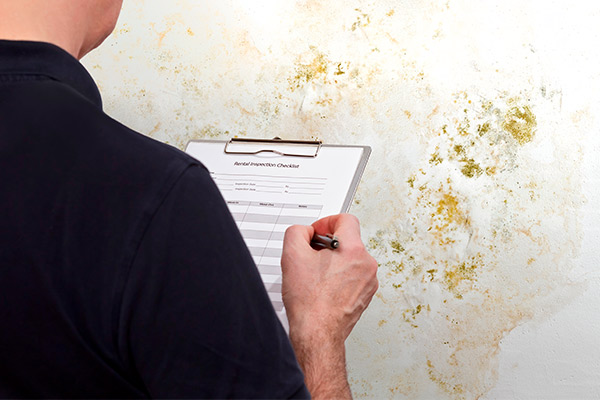
Regular roof inspections can stop mold before it spreads. Spotting the signs early is one of the most cost-effective ways to preserve your home’s structure and safety.
When and Where to Inspect
To minimize mold risk, make inspections part of your routine:
- Check your roof after every heavy storm.
- Perform full roof inspections twice a year: once in spring and once in fall.
- Inspect before selling, buying, or if your roof is more than 10 years old.
Signs of Mold to Watch For
Look for these visible and invisible indicators that mold may be forming:
- Water stains on ceilings and walls
- Musty odors indoors, especially after rain
- Sagging drywall or peeling paint
- Black, green, or dark patches on roof surfaces
- Unexplained allergy symptoms or coughing indoors
Common Trouble Spots
Focus your inspections on these common mold-prone areas:
- Shingles and roofing tiles
- Flashing around chimneys, vents, and skylights
- Gutters, downspouts, and drainage pipes
- Attic insulation and corners
DIY vs. Professional Inspections
The table below compares do-it-yourself inspections to professional ones, so you know when to bring in expert help.
| Inspection Type | Pros | When to Use |
| DIY | Immediate, free, good for surface checks | After minor storms or as a monthly routine |
| Professional | In-depth, tools to find hidden damage | After severe weather, visible signs, roof age >10 yrs |
Early detection makes a big difference. Even if you don’t see mold, check regularly for moisture and damage that could lead to it.
Step 3: Address Moisture Intrusion and Improve Roof Drainage
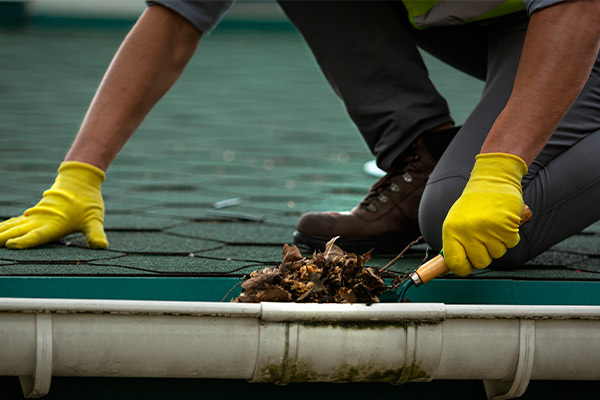
Mold cannot grow without moisture. To prevent growth entirely, you must control moisture levels and ensure proper drainage on and around your roof.
How to Eliminate Moisture Risks
These actions can help eliminate moisture before it causes damage:
- Clean your gutters regularly to keep water flowing away from your roof.
- Inspect and repair flashing, which causes 90% of roof leaks when damaged.
- Replace missing or broken shingles immediately to stop water intrusion.
- Improve attic ventilation to allow trapped heat and humidity to escape.
Common Moisture Intrusion Points
This table highlights the areas most likely to allow water in and what to do about them.
| Intrusion Point | Risk Level | Recommended Action |
| Gutters & downspouts | High | Clean seasonally and ensure proper slope |
| Flashing | Severe | Inspect for rust, separation, and gaps |
| Roof tiles/shingles | High | Replace immediately if cracked or missing |
| Attic ventilation | Medium | Add soffit or ridge vents if missing |
Stopping moisture at the source helps you stop mold in its tracks. Good drainage is one of your roof’s best defenses.
Step 4: Clean, Remove, and Treat Mold-Affected Areas
If mold has already appeared on your roof or in your attic, removing it safely and thoroughly is essential to avoid regrowth and health hazards.
Safe Mold Removal Steps
Follow these key steps to eliminate mold:
- Use soft washing, not high-pressure washing, to avoid damaging shingles.
- Clean hard surfaces with soap and water, followed by a 10% bleach solution.
- Discard porous materials like wood or insulation if they’ve been wet for more than 48 hours.
Safety Tips for Cleaning Mold
When removing mold yourself, take the following precautions:
- Wear gloves, an N95 mask, and eye protection
- Ensure proper ventilation when using bleach
- Never mix bleach with ammonia
- Avoid painting over mold, eliminate the source first
When to Call a Professional
If the issue is extensive or recurring, it’s best to contact a mold removal expert:
- If mold covers 25 square feet or more
- If it returns after cleaning
- If you notice structural damage or develop health symptoms
Mold Removal Methods by Surface
Use this table to determine the right removal method based on the affected material.
| Surface Type | Method | Recommendation |
| Non-porous (metal) | Clean + disinfect | Scrub and apply 10% bleach |
| Porous (wood, drywall) | Remove & replace | Discard if wet >48 hours |
| Roofing surfaces | Soft wash | Hire professional with eco-safe solutions |
Correct removal is essential as incomplete cleaning will lead to mold coming back.
Step 5: Prevent Future Mold with Proactive Roof Maintenance
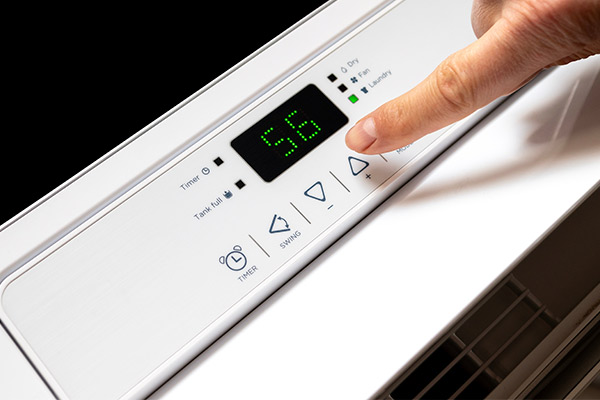
The final and most important step is prevention. Ongoing maintenance can keep mold from returning even through the wettest monsoon seasons.
Key Maintenance Tasks for McAllen Homes
Make these habits part of your seasonal roofing routine:
- Clean gutters after storms and before each rainy season
- Check flashing, vents, and sealants regularly
- Trim tree branches that hang over the roof
- Consider using mold-resistant coatings or shingles during repairs
Indoor Mold Prevention Tips
You can also help prevent mold indoors with these best practices:
- Maintain indoor humidity levels between 30–50%
- Use dehumidifiers during humid months
- Ensure kitchen and bathroom fans vent properly to the outside
Seasonal Maintenance Checklist
Use the following table to plan mold-prevention efforts throughout the year.
| Season | Tasks |
| Spring | Clean gutters, inspect attic for winter damage |
| Summer | Trim trees, check ventilation, replace cracked shingles |
| Monsoon | Gutter cleaning, flashing inspection, mold inspection |
| Fall/Winter | Apply sealants, schedule soft wash, check indoor humidity |
Prevention is always more affordable than mold remediation. A little seasonal maintenance can save you thousands.
Mold-Free Roofs Start with Smart Planning
In McAllen’s mold-prone climate, staying ahead of the rain is key to protecting your roof. You can keep your home safe and dry, and healthy throughout the monsoon season by following this five-step guide:
- Inspect
- Control moisture
- Remove mold safely
- Prevent future growth
For expert help: Frontline Home Solutions offers mold inspections, roofing soft washes, and maintenance plans tailored specifically for McAllen and the Rio Grande Valley. Call today for a free at-home estimate and enjoy peace of mind.

